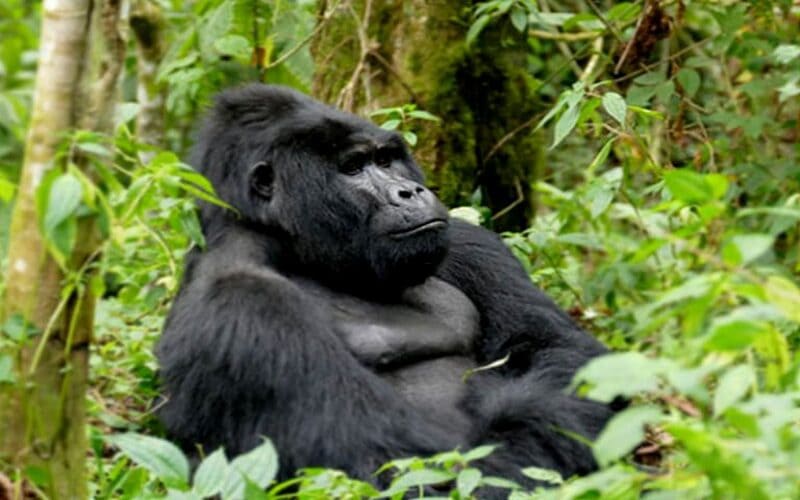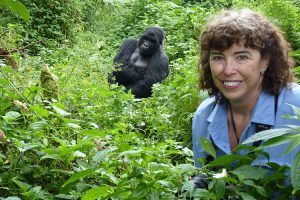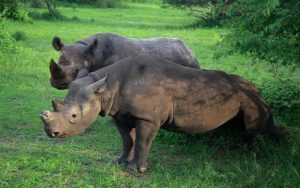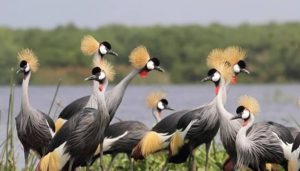GUIDE TO MOUNTAIN GORILLA TREKKING IN RWANDA.
Mountain Gorilla Trekking in Rwanda offers the rare opportunity to encounter mountain gorillas deep in the misty landscapes of Volcanoes National Park, Rwanda. These magnificent creatures are the world’s most endangered primate species, facing threats from habitat loss and human activity. Despite these challenges, the mountain gorillas of Rwanda have become one of the world’s greatest conservation success stories.
As the only primate species on Earth with an increasing population, the Rwanda gorilla trekking experience plays a pivotal role in their conservation. Rwanda has successfully built a thriving eco-tourism industry centered around gorilla encounters, offering travelers a once-in-a-lifetime chance to observe these majestic creatures up close while supporting their continued protection.
Mountain gorilla trekking tours in Volcanoes National Park not only provide a unique wildlife experience but also contribute to the conservation efforts that have led to the growth of the mountain gorilla population in Rwanda.
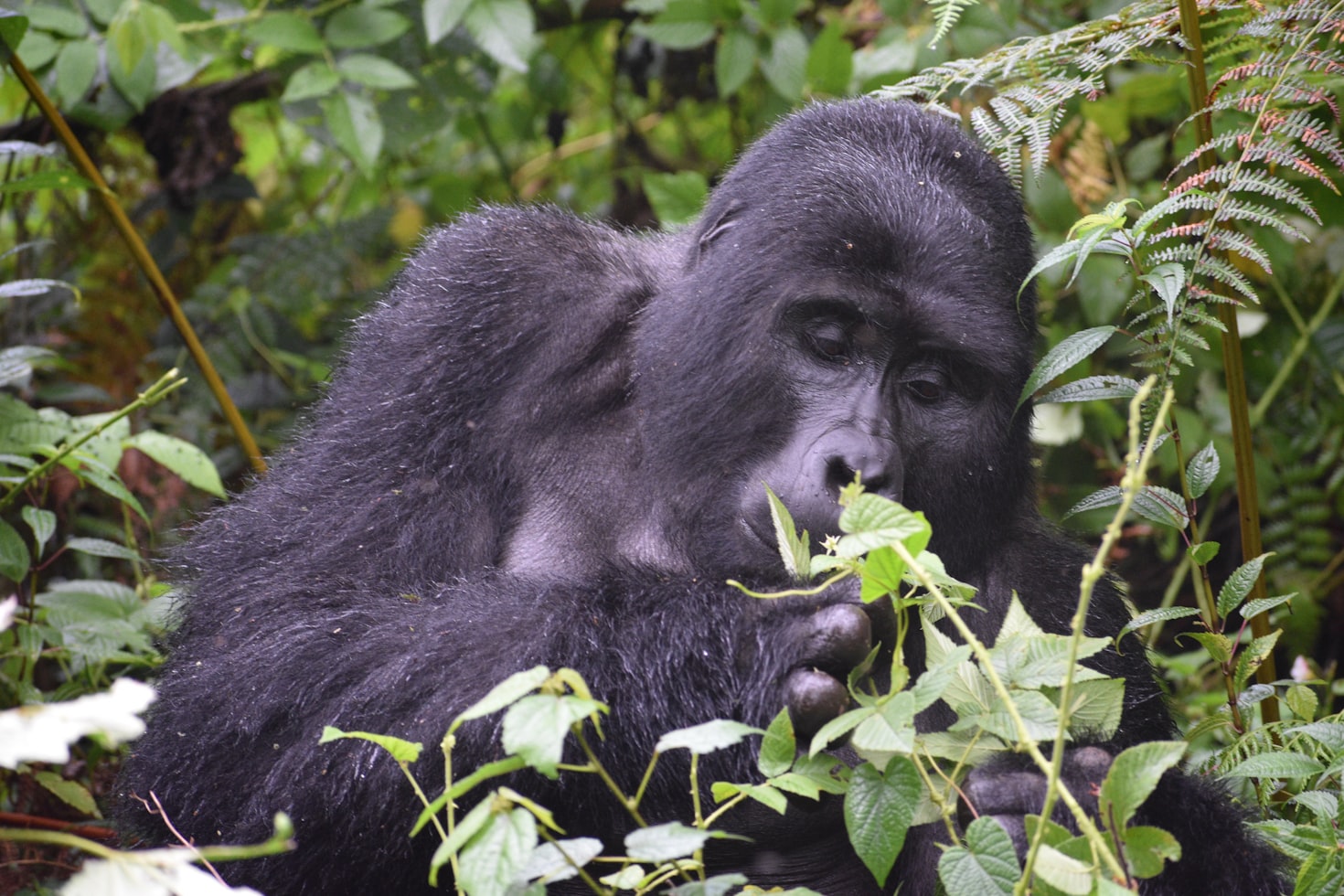
Witnessing the gorillas in their natural habitat is an incredible privilege and one of the most extraordinary wildlife encounters you’ll ever experience.
It’s no easy feat, with hours of pushing your way through dense, slippery jungle, but once you’re there – watching baby gorillas playing or a silverback sizing you up – you may never be quite the same. Exhilarating and eye-opening, many people find themselves deeply moved by a rare encounter with a gorilla in the wild. Read on to discover everything you need to know about gorilla trekking in Rwanda.
FAQs About Mountain Gorilla Tours in Rwanda
Where to Find Mountain Gorillas in Rwanda
Just over half of the world’s 1,000 remaining mountain gorillas live in the Virunga Mountains of Central Africa—a range of volcanoes extending about 50 miles along the borders of Rwanda, Uganda, and the Republic of the Congo
The best place to see these rare creatures is in Volcanoes National Park in northwest Rwanda.
How to Get to Volcanoes National Park
The easiest way to enter Rwanda is by flying into the capital city of Kigali. Upon arrival at Kigali International Airport, you’ll receive a 30-day single-entry tourist visa
As of 1st January 2018, nationals of all countries can get this visa for a fee of US$30, however be sure to check Rwanda immigration for the most up-to-date information.
Once you have cleared immigration at the airport, you will be met by a Wayfarer representative and transferred to your hotel.
We recommend spending a couple of days in Kigali at the start or end of your trip, or you can make your way directly to Volcanoes National Park. The park is located about 105 kilometers from Kigali and is a two-hour drive from the airport.
Best Time to Visit Rwanda
You can track gorillas in Rwanda throughout the year. The best time to visit tends to be during the dry season from June to September, as the jungle is less muddy and the paths are less slippery. However, keep in mind that it can rain at any time of year.
The wettest months are April and May, bringing tricky muddy trails, however you can still track gorillas at this time. The gorillas often climb higher up the mountain during the dry season and descend during the rains.
This is also an excellent time for tracking chimpanzees as fruit ripens and this brings the chimps down to the lower reaches of the forest canopy.
The rainy seasons (around March to May and October to November) can also offer excellent conditions for photography. After a rain shower, the air is clear of dust, creating perfect lighting and atmosphere for capturing stunning images of the gorillas.
What to Expect on a Gorilla Trek in Rwanda
Your gorilla trekking adventure starts early—you’ll need to arrive at the Kinigi Park Headquarters in Volcanoes National Park by 7:00 AM for a briefing from one of the park rangers.
You’ll begin your trek around 8:30 AM, and you’re required to return to the campground by 7:00 PM at the latest, although your trek may take less time.
One of the key factors in determining which gorilla family you’ll visit is the trek’s duration and difficulty. Treks can last anywhere from two to nine hours depending on the location of the gorilla family you’re tracking.
You don’t need to be super-fit, but a reasonable level of fitness will certainly enhance your experience.
Guides and trackers will lead you through forest trails, which can be slippery, muddy, and humid—even during the dry season. The trek can be fairly challenging due to the steep, dense undergrowth and high altitude. Despite the difficulty, the experience of spending time with wild mountain gorillas makes it all worthwhile.
Once you find a gorilla group, you’ll have up to one hour to observe them in their natural habitat before returning to your lodge to reflect on this once-in-a-lifetime experience.
Meeting the Mountain Gorillas of Rwanda
When you encounter the gorillas, you’ll have the chance to spend 40 minutes to one hour quietly observing them in their natural surroundings.
The gorillas will likely be just a few meters away, going about their daily lives—feeding, grooming, and interacting—under the watchful eye of the silverback. It’s a moment you will never forget.
Visitors should speak in low voices and avoid sudden movements or loud noises. While it’s natural to feel excited, it’s important to express this quietly and respectfully.
A minimum five-meter distance must be maintained, and touching the gorillas is strictly prohibited.
Even though these gorillas are habituated to human presence, they are still wild animals and may react unpredictably. Always follow the instructions of your guide and tracker.
Rwanda Gorilla Trekking Prices
As of May 2019, gorilla trekking permits in Rwanda cost US$1,500 per person.
This price includes:
-
Park entrance fees
-
Expert guides and trackers
-
The protection of a dedicated tourism police force
-
One precious hour with the mountain gorillas
If you book your gorilla safari holiday through us, we can secure your permit at no additional cost.
Tipping your guides and trackers is optional and entirely at your discretion.
Refunds and Cancellations of Gorilla Permits
If you are showing signs of illness on the day of your trek, you will not be allowed to participate for the safety of the gorillas. In such cases, you will be refunded 50% of the tracking fee, as determined by the Warden in Charge.
Gorillas are highly susceptible to human diseases and lack the immunity to fight infections. Keeping them safe from illness is a top priority.
What to Pack for a Gorilla Trekking Safari in Rwanda
While you don’t need a lot of gear, it’s essential to pack smart for your gorilla trekking experience.
Keep in mind:
-
Domestic flights often limit luggage to 20 kg per person, so use a soft bag or holdall to maximize space.
-
Bring appropriate clothing and footwear for hiking in potentially muddy and humid conditions.
-
Essentials include a rain jacket, sturdy hiking boots, gloves, long trousers, and insect repellent.
Preparation will ensure you’re comfortable and ready to enjoy this unforgettable adventure.
Here’s our advice on what you should pack for Mountain Gorilla Trekking Rwanda:
- Sturdy, waterproof hiking boots with good ankle support. Make sure your shoes are well worn-in before departing to avoid any nasty blisters.
- Light, breathable, waterproof jackets and trousers, and long-sleeved shirts. It’s important to wear light, long layers due to the variable weather and to avoid any bites from insects.
- Warm layers for the chilly mornings and cold nights.
- Long, lightweight woolen socks.
- Wide-brimmed hat and sunglasses for sun protection.
- Toiletries such as sun cream, insect repellent, after-sun, bite relief cream and lip balm.
- Garden gloves to protect your hands as you grip the vegetation during your trek.
- A small backpack to carry your water, lunch, extra clothes, binoculars and camera.
- Camera with extra lenses and batteries. Bring more memory than you think you need.
- Binoculars to have a clear view of everything and to spot other wildlife such as birds and monkeys.
- Snacks – the trek can be quite strenuous, lasting anywhere from two to nine hours, so bring some snacks for extra energy.
- A reusable water bottle to limit waste – you’ll need to bring plenty of drinking water on your trek.
- Multi-way travel adaptor. Rwanda uses plug types C (two round pins) and J (two round pins and a grounding pin), and operates on a 220V supply voltage and 50Hz standard frequency.
-

